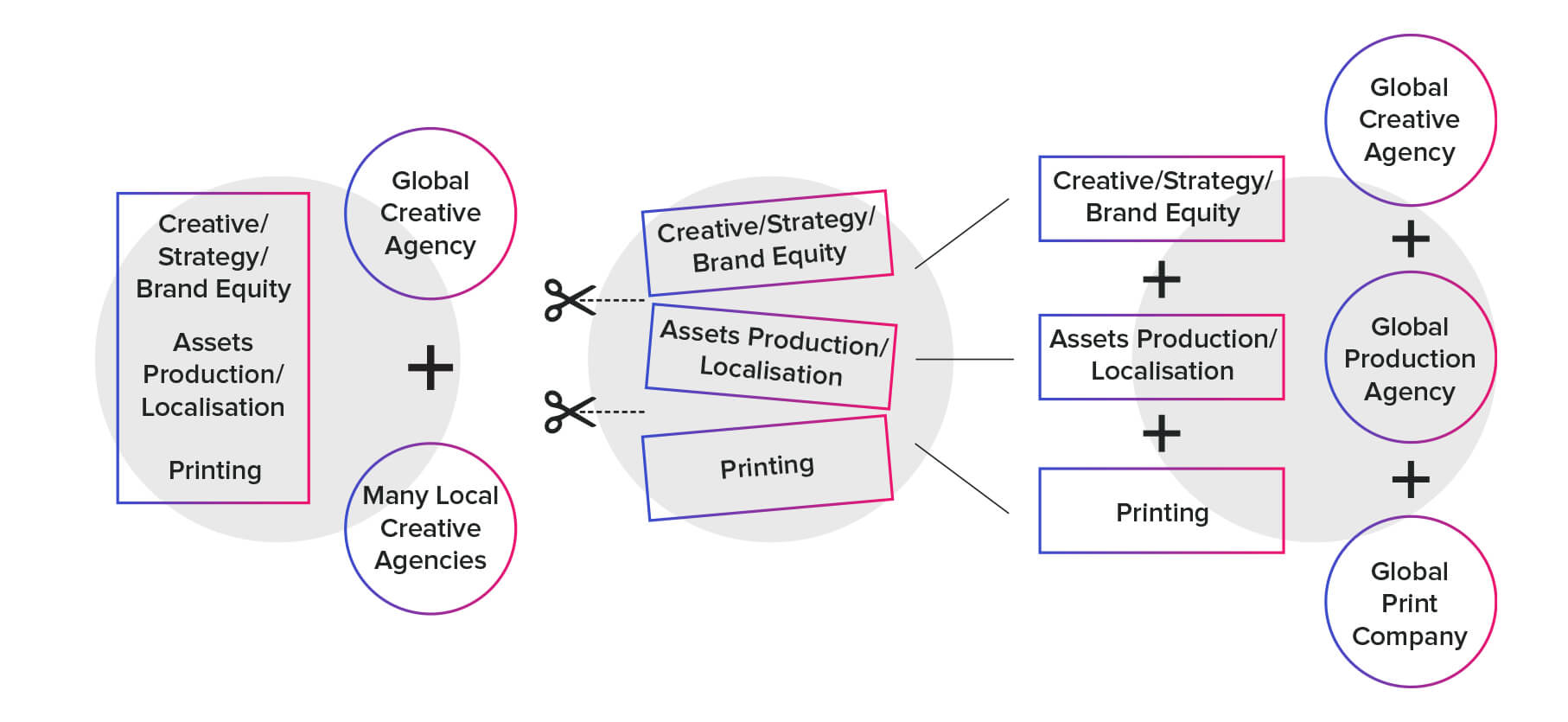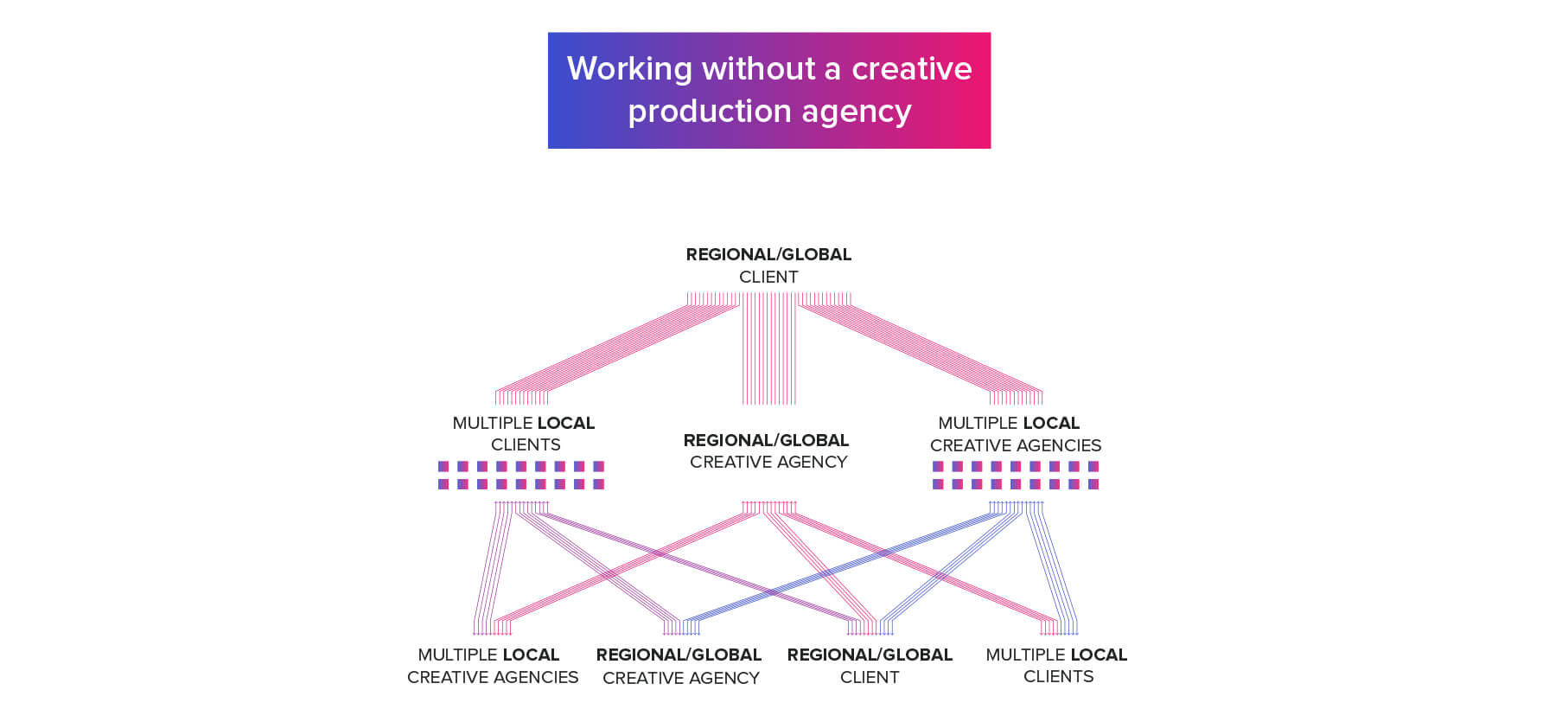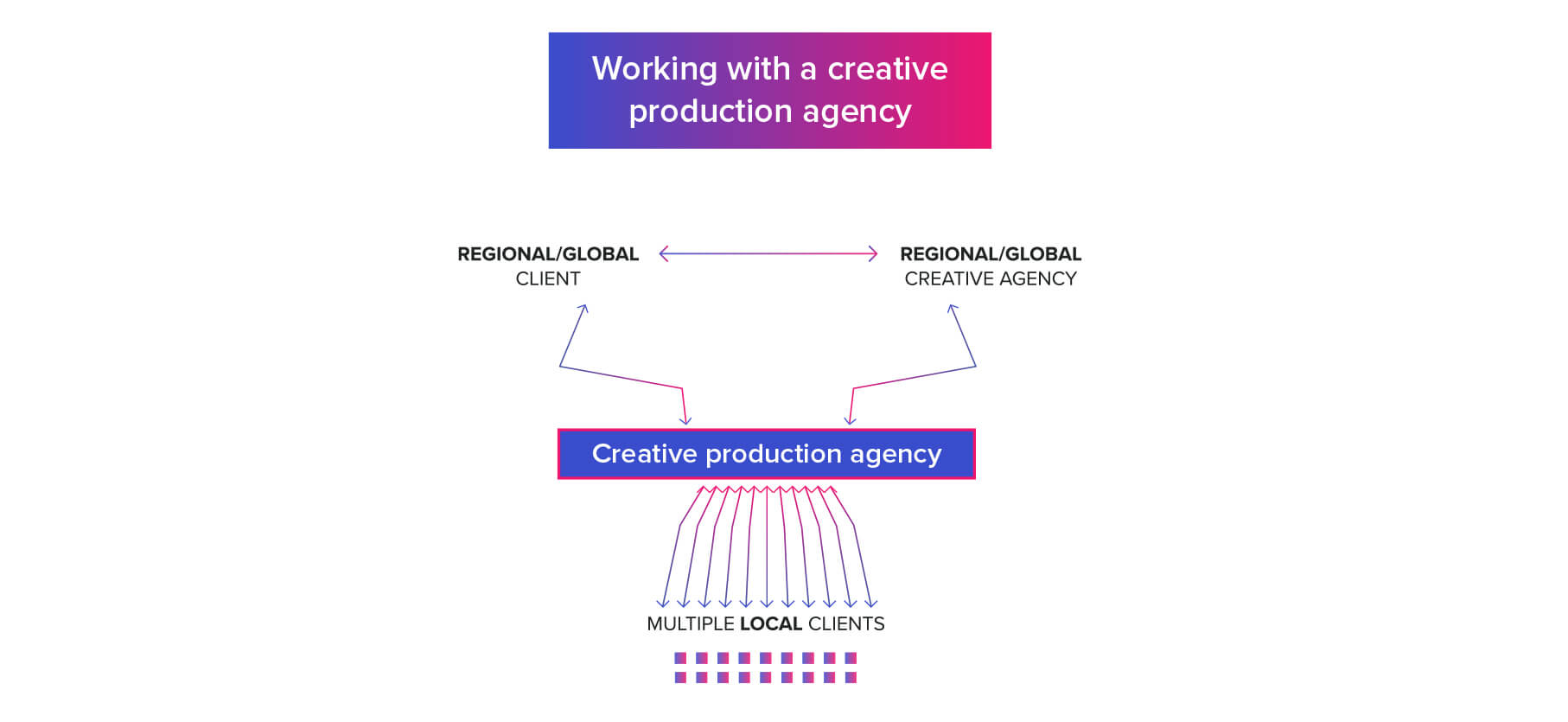The Disadvantages of Centralised Production
There is not a universal answer for whether or not a marketer should decouple agency and production services. Advantages and disadvantages exist for coupled and decoupled approaches.
Go to the article
Production decoupling makes perfect sense for many companies. In layman’s terms, if one is looking to build a house, they would employ a range of specialists, e.g. builders, architects, engineers, etc. But, they would not task the architect with building the foundations, or have the builder create blueprints. Additionally, and quite importantly, production decoupling should save on roll-out costs. In marketing, the savings earned by employing decoupling approaches can be invested in wider communications over more or new channels, or simply returned to the bottom line.
”When utilising production decoupling methods, companies can streamline production, thereby channelling their savings back to communications or research & development.”

Many global brands have already taken full control from their tier-one agencies and employ production houses to manage their media, pre-press, print and/or digital deliverables. Brands, such as Pernod Ricard, Reebok, P&G, J&J and Hilton Worldwide task their lead agencies to work on ideation, as well as the creative master for global campaigns, and assign local executions to localisation and creative production agencies. In this way, creative agencies are left to focus on their core assignments, while production agencies can report and deliver client KPIs, and distribute on time and within budgets.
However, production decoupling is not for all brands. It can take a lot of time to implement and also can be hugely risky if not planned and executed correctly. On the other hand, it can result in significant savings for companies with the right terms.
As global marketing becomes more and more complex, production decoupling has been a novel approach, albeit necessary for many global brands, reaching a wider audience with content that resonates with them on a local scale. So, using a production house for localisation, for example, can minimise the number of agencies employed and give clients more control and efficiency. Plus, it leaves the agency of record to do what they do best – developing creative ideas and strategies.


Specialisation: A primary reason that production decoupling is utilised is that many production services require expertise, as well as high demands. Since production houses focus solely on, well, production, they have a great deal of technical experience in managing production requirements on global levels. Specialists also have the expertise to build better platforms and be more robust and innovative about their distribution strategies. They are more aware of current technologies and updates, so they are at a better position to give reliable advice on measures to be taken, or what is just the latest passing trend.
Faster to market: Again, specialist houses are well versed in best practices in a given industry in terms of communication and distribution. Therefore, their efficient processes allow for quicker execution in bringing campaigns to markets on global or local levels.
Transparency and control: Agencies often employ third-party distribution teams to manage deliverables, creating high costs for brands. Production decoupling approaches can avoid utilising third parties for production work once effective procedures, visibility and tracking, communications channels and KPIs are all properly put in place.
Creative freedom: Production decoupling allows the agency of record to focus on creative development, ideation and strategies. Once the production work is left to specialist houses, the creative agencies can spend time fleshing out creative concepts instead of dealing with campaign particulars that don’t require their expertise. In addition, production decoupling also gives marketers the freedom to choose the best in class when seeking creative development. They can employ their agency of record, production houses and even user-generated content in order to extract the highest quality and most relevant content required for their campaigns.
Consistency: Because brands often run multiple campaigns over several regions and languages, inconsistencies may arise across different platforms or markets. Employing a centralised production house for all production work can offer more visibility and consistency when delivering assets and also during distribution.
Competitive pricing: Consolidating all production work under one roof comes with the benefit of a consolidated cost. Because many houses use a rate card approach, it also allows for greater visibility on pricing and less hidden overhead charges.
Resource inefficiency
Resource efficiency
Global scale: Generally, production houses also have the added benefit of accessing a global network, and understand the nuances of the language and culture on the local scale. This better ensures that master assets resonate as best as possible with the campaign’s target audience.
Sharing assets: Sharing assets across markets is made more efficient through the use of an asset library for storing all finalised assets from all markets that are serviced. This provides multiple benefits for local marketing teams:
Traditionally coupled companies that are adopting a re-coupled approach may see production decoupling as a risky endeavour, albeit, a leap of faith. However, decoupling provides better efficiency and cost reductions, which most companies want to, naturally, capitalise on. It reduces overhead costs, eliminating the need for bloated staff, such as multiple account directors and managers, who ultimately have the same responsibilities in every channel. And in addition to brand consistency, decoupling provides production partners who can deliver fully integrated campaigns.
Find out how your brand can benefit from letting your creative agency develop only core ideas and moving the creative production to a specialist production house.
Download your free guide